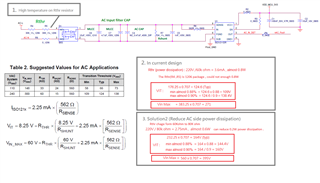Tool/software:
Hi Koteshwar Rao ,
Sorry ,We have thermal issue in ISO1211 AC detection design ,need your suggestion.
Please refer below picture .

1. The AC inpurt source is 220V ,
We check the Rthr resistor's temperature is too hight (5min rise up to 90‘C)
2. We change the Rthr resistor to SMD(2512) or MELF resistor (MMB02070C3002FB200)x2pcs ,
 but the Rthr temperature could not uder 50‘C (this sepc from customer requirement)
but the Rthr temperature could not uder 50‘C (this sepc from customer requirement)
3. Could I modifly Rthr or Rshunt value to reduce AC innput power dissipation ?
4. For this thermal issue ,could you advise Rthr resistor type or PCB layout design
(maybe can remove the Rthr's PCB area (just only PAD or through hole) ,to reduce heat compoment's conduction )
Thanks a lot .


